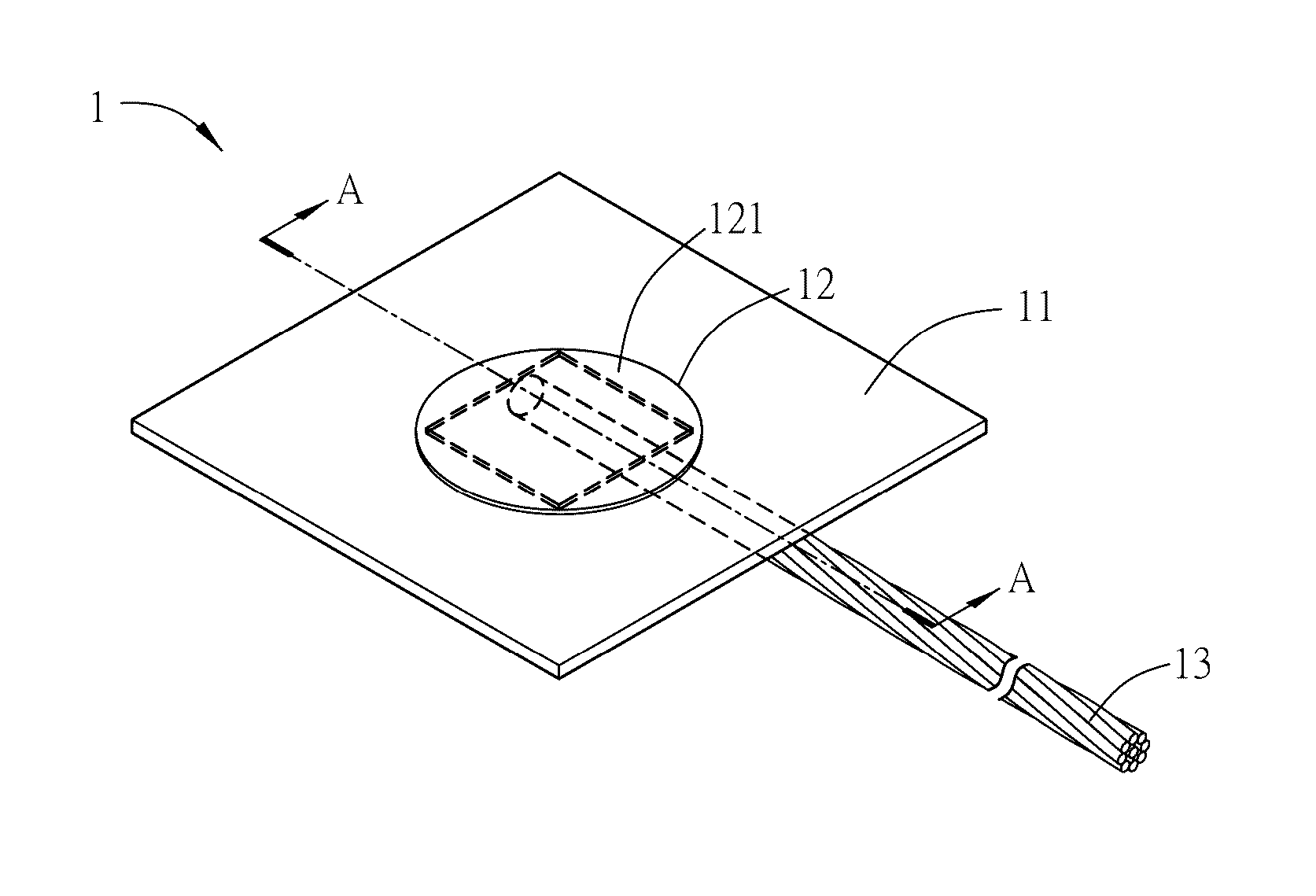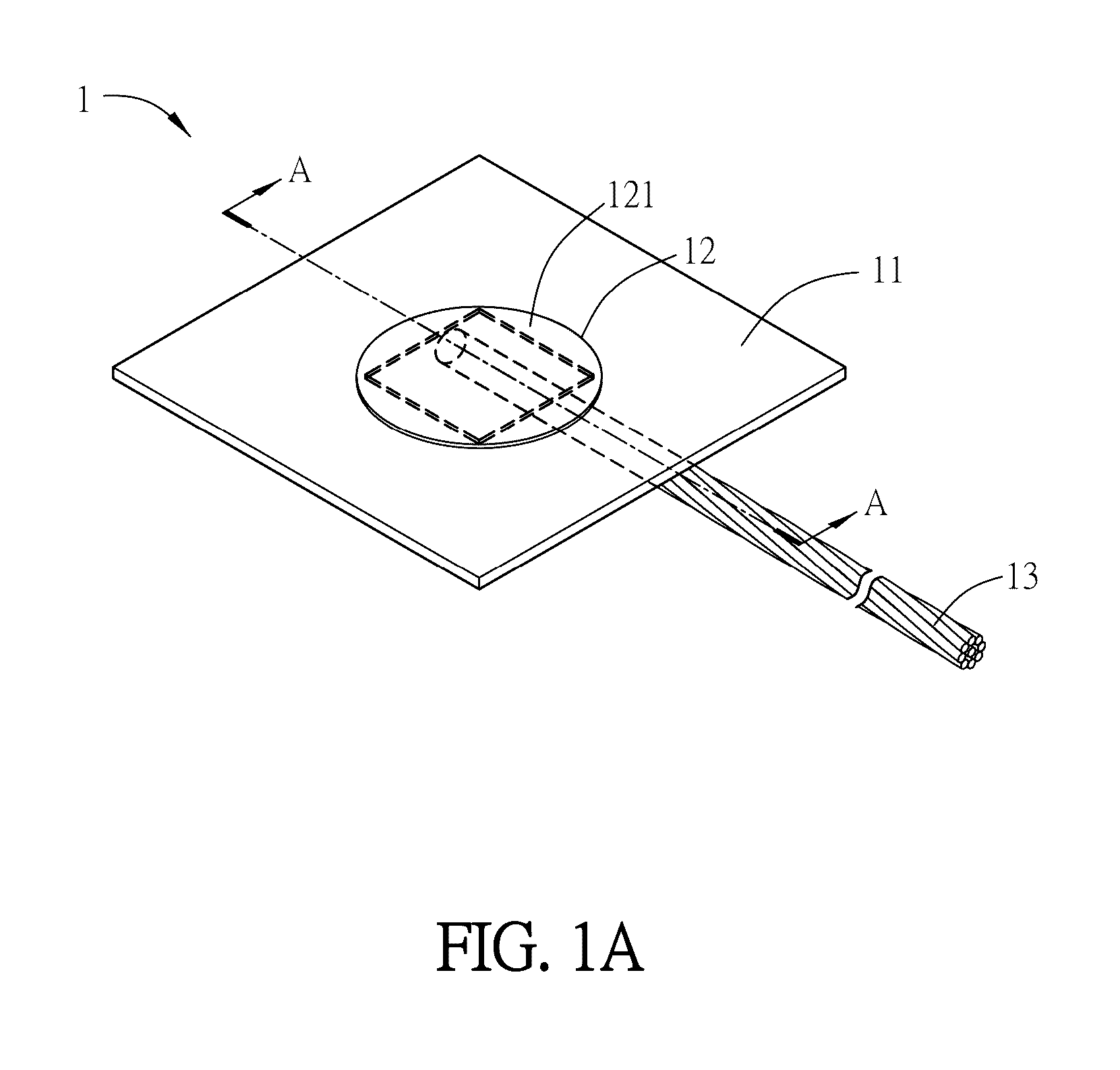Detection device
a detection device and detection method technology, applied in the field of detection devices, can solve the problems of affecting the use of users, requiring operators and a lot of time to precisely detect additives in the lab, and all the methods need high-tech and expensive equipment for detection, so as to simplify the preparation process, facilitate and fast operation, and simplify the effect of operation property
- Summary
- Abstract
- Description
- Claims
- Application Information
AI Technical Summary
Benefits of technology
Problems solved by technology
Method used
Image
Examples
experimental example 1
The Layout of the Reaction Areas and the Color Intensity Test
[0083]FIG. 11 is a schematic graph showing the mean intensities with respect to different reaction area layouts in the detection device 1i. Referring to FIG. 11, the example is to check whether the reaction unit 12i is configured with the hydrophobic non-reaction area 122i. A blue aqueous solution is transported through the wire transporting unit 13i to the detection device 1i (test A) and to a detection device without non-reaction area (test B). The color results of tests A and B are collected by naked eyes, camera or scanner. The experimental results indicate that the color intensities between the test A (using the detection device 1i with hydrophobic non-reaction area 122i) and the test B (using the detection device without hydrophobic non-reaction area) are obviously different.
experimental example 2
The Test for the Relationship Between the Length of the Wire Transporting Unit and the Absorption Volume
[0084]At first, a fine balance (sensitivity=1 mg) is used to measure the weight of a wire transporting unit 112i before absorbing water. Next, the wire transporting unit 112i is hanged on the edge of a beaker, and only the tail part (1-2 cm) of the wire transporting unit 112i is contact with solution. The solution in the beaker is absorbed by the wire transporting unit 112i based on capillary phenomenon until the entire wire transporting unit 112i (the other end hanged on the beaker) is also full filled with the solution. Then, the wire transporting unit 112i is weighted again. Afterwards, the wire transporting unit 112i is put on the reaction unit 12i (as the configuration of detection device 10. Accordingly, the reaction area 121i of the reaction unit 12i, which has better absorption ability, can absorb the solution from the wire transporting unit 112i. Then, the wire transporti...
experimental example 3
Detecting Nitrite by the Detection Device 1j
[0086]To be noted, the structure of the applied detection device 1j is mostly the same as that of the detection device 1i of the previous embodiment. The difference therebetween is that the detection device 1j includes three reaction areas 121j.
[0087]The detection reagent is dropped by micropipette (Gilson, Inc.) onto the reaction areas 121j of the detection device 1j. The detection reagent includes 50 mmol / L sulfanilamide (≧99%, Sigma-Aldrich), 330 mmol / L citric acid (≧99.5%, Sigma-Aldrich) and 10 mmol / L N-(1-naphthyl)ethylene diamine (≧98%, Sigma-Aldrich). After adding the detection reagent, the detection device 1j is dried for 15 minutes at 25° C. Then, the wire transporting unit 13j of the detection device 1j is used to contact and collect the test samples. The test samples include a food sample containing nitrite standard diluted in hot pot soup (test A) and a buffer sample containing nitrite standard diluted in distilled deionized ...
PUM
| Property | Measurement | Unit |
|---|---|---|
| included angle | aaaaa | aaaaa |
| included angle | aaaaa | aaaaa |
| density | aaaaa | aaaaa |
Abstract
Description
Claims
Application Information
 Login to View More
Login to View More - R&D
- Intellectual Property
- Life Sciences
- Materials
- Tech Scout
- Unparalleled Data Quality
- Higher Quality Content
- 60% Fewer Hallucinations
Browse by: Latest US Patents, China's latest patents, Technical Efficacy Thesaurus, Application Domain, Technology Topic, Popular Technical Reports.
© 2025 PatSnap. All rights reserved.Legal|Privacy policy|Modern Slavery Act Transparency Statement|Sitemap|About US| Contact US: help@patsnap.com



